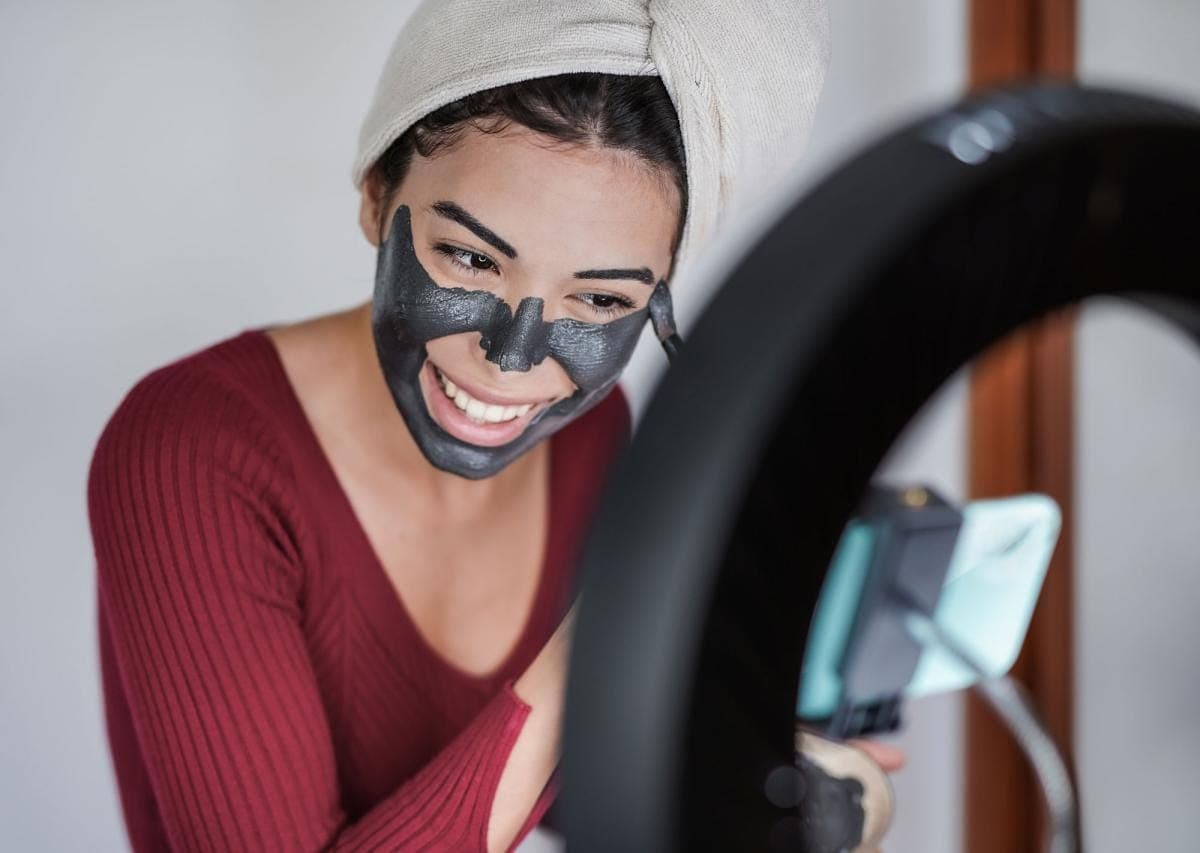Skincare
The Benefits of Regular Facials and How to Do Them at Home – Glowing Skin Starts with Consistency
If you click on links we provide, we may receive compensation.
The last time you walked out of a spa with that unmistakable post-facial glow you probably felt like the world noticed. There is data to back up why people chase that feeling. The International Spa Association reports that Americans scheduled roughly 182 million spa visits in 2023, nudging revenue for skin services such as facials past the twenty-one-billion-dollar mark. Numbers like that reveal how serious we are about routine care – and why translating the ritual into something you can manage at home is worth the effort.
Why a Facial Is More Than Pampering
Beauty culture sometimes frames facials as indulgence, yet your skin sees them as maintenance. Day after day sebaceous secretions mingle with airborne grime, sunscreen residues, and the metabolic debris that clings to living tissue. A professional facial combines chemical and manual exfoliation, gentle extractions, targeted serums, and a massage that coaxes circulation toward the surface. That four-part choreography resets the acid mantle, helps pores appear smaller, and briefly lifts cellular respiration so the complexion looks fresher.
Estheticians work with the natural rhythm of epidermal turnover. Keratinocytes rise from the basal layer toward the stratum corneum on a twenty-eight-to-thirty-day schedule. When that journey stalls – think stress, pollution, or a night of heavy makeup left on – skin tone dulls, and breakouts gain ground. A monthly facial steps in as an external “quality-control check,” whisking away dead cells and re-hydrating freshly revealed ones before they can harden.
Science Behind Regular Treatments
Researchers have monitored circulation changes after facial massage and recorded up to a ten-percent uptick in microvascular flow for half an hour afterward, an effect that encourages nutrient delivery while sweeping away metabolic waste. Small clinical trials on hydrating treatments show measurable bumps in corneocyte water content and a smoother light-reflection profile – the technical way scientists confirm what we call radiance. Add lymphatic drainage strokes and you also assist immune cells that patrol the dermis.
Collagen output slows about one percent per year after our mid-twenties. Repeated mild stimulation from professional peels or gentle micro-currents nudges fibroblasts to keep working. Over timelines look softer because the matrix beneath them remains springier. The benefit compounds, much like compound interest in a bank account. Skipping a few cycles may not erase progress, but staying on track preserves the dividend.
More Than Skin-Deep
One reason spas remain busy even when wallets tighten is the mental payoff. A study in the journal Complementary Therapies in Clinical Practice found that a single forty-minute facial reduced self-reported anxiety scores by nearly thirty percent. Touch triggers parasympathetic activity; slower breathing and a subtle drop in blood pressure follow. That calm state sends its own message to the skin barrier, lowering cortisol and the associated inflammatory cascade that can aggravate blemishes and redness.
Barriers to Spa Attendance and the Case for Home Rituals
Professional appointments cost real money. The ISPA study pegs the average price of a facial at about one-hundred-and-thirty dollars nationwide, and resort settings push that figure notably higher. Geography poses a second hurdle. Rural zip codes often lack licensed practitioners. Finally, busy calendars make ninety minutes away from obligations feel luxurious but unrealistic. All three obstacles fade once you shape a reliable home facial routine.

Setting the Scene at Home
Creating spa atmosphere begins with preparation rather than product. Cleanse every surface your fingertips will touch countertop, washcloths, and your hands themselves. Tie hair back, open a window for gentle ventilation, and queue a playlist that slows your breathing. A double cleanse follows: first an oil or balm to melt makeup and sunscreen, then a mild gel to sweep away residue. Spend a full minute on each cleanse, massaging in small circles from the center of the face outward.
Warmth opens the way for actives. Instead of balancing a boiling-water bowl and towel, hop into a steamy shower for three minutes or drape a microfiber cloth soaked in warm – not hot – water across your cheeks. When skin feels supple, apply a non-abrasive exfoliant: lactic acid at five percent or a papaya enzyme gel both loosen bonds between tired cells. Rinse thoroughly once a mild tingle subsides.
Ingredient Spotlight
Clay formulas rich in kaolin or bentonite suit combination and oily types, drawing excess sebum without stripping. Dry skin thrives on honey-based masks that supply humectants and gentle antioxidants. Sensitive complexions often prefer oat-infused creams that calm while they hydrate. Whatever mask you choose, spread an even layer from the bridge of the nose toward the ears, leave room around the orbital bone, and remove before the product flakes. That timing protects the skin barrier.
Hydration is the next chapter. While the surface is still damp, press a low-molecular-weight hyaluronic acid serum into cheeks, chin, and forehead. Wait thirty seconds, then seal with a few drops of squalane or evening primrose oil warmed between your palms. The occlusive-emollient combo slows transepidermal water loss for hours. If your serum delivers niacinamide or a peptide complex, you also feed cellular energy pathways and stimulate collagen maintenance.
Massage Moves and Tools
Hands provide all you need, yet jade rollers or gua sha stones feel pleasant if you own them. Begin at the center of the chin and glide along the jaw toward the earlobes five slow times, pausing where the mandible meets the ear to encourage lymph drainage. Move to the cheeks, sweeping from nostrils toward the temples. Use the ring finger to trace half-circles under the eyes, feather-light to avoid tugging. Finish with small circles across the forehead, nudging tension from the corrugator muscles that carve frown lines.
Always work in upward or outward motions, following the direction lymph naturally travels. Apply no more pressure than you would use to polish a peach. Overenthusiastic kneading can bruise capillaries. After five minutes skin usually looks temporarily flushed, a sign that blood flow has surged. Pat a water-based moisturizer over the oil to complete the layering. Daytime routines end with a broad-spectrum sunscreen. Even indoors, ultraviolet A rays slip through windows and degrade collagen.

Timing and Frequency
Weekly mini facials help most people maintain clarity, while a longer ritual each month simulates the rhythm of spa sessions. Those with oily, congested skin may prefer bi-weekly clay masks yet should keep stronger exfoliants limited to once a week. Sensitive or rosacea-prone individuals fare better with a gentle enzyme or lactic sweep every ten days and a hydrating mask in between. Monitor sensation: persistent tingling, peeling, or tightness signals the need to slow down.
Safety Notes
Patch testing preserves comfort. Dab a micro-amount of any new serum below the ear and wait forty-eight hours. If redness or itching appears, rethink the formula. Avoid combining multiple acids with retinoids in a single night; the barrier struggles to recover from too many actives at once. Pregnant clients should steer clear of high-dose salicylic acid and retinoic derivatives. Remember that at-home gadgets delivering radiofrequency or microneedles require strict hygiene protocols to avoid infection. When in doubt, seek medical advice before use.
Frequently Asked Questions
Can sensitive skin handle regular facials? Most sensitive types do fine with a stripped-back protocol focused on hydration and minimal fragrance. Swap grain scrubs for enzyme gels and keep the massage feather light. Work closely with a dermatologist if you have active eczema or barrier disorders before adding new steps.
How often should I repeat an at-home facial? A ninety-minute extended ritual once every four weeks aligns with the skin’s renewal calendar, while a scaled-down version every seven days keeps buildup in check. If you notice lingering irritation, extend the interval by a week.
Do I need expensive equipment to get results? Consistency trumps technology. Clean hands, lukewarm water, a mild exfoliant, and a basic hydrating mask already cover the essentials. Tools amplify rather than replace technique. Purchase devices only if you are prepared to read instructions and maintain them.
Is steaming safe when I have rosacea? Steaming can dilate already fragile capillaries. Swap hot vapor for a warm compress lasting under a minute and follow immediately with a cooling mist of thermal water. Monitor skin feedback; if flushing escalates, discontinue.




